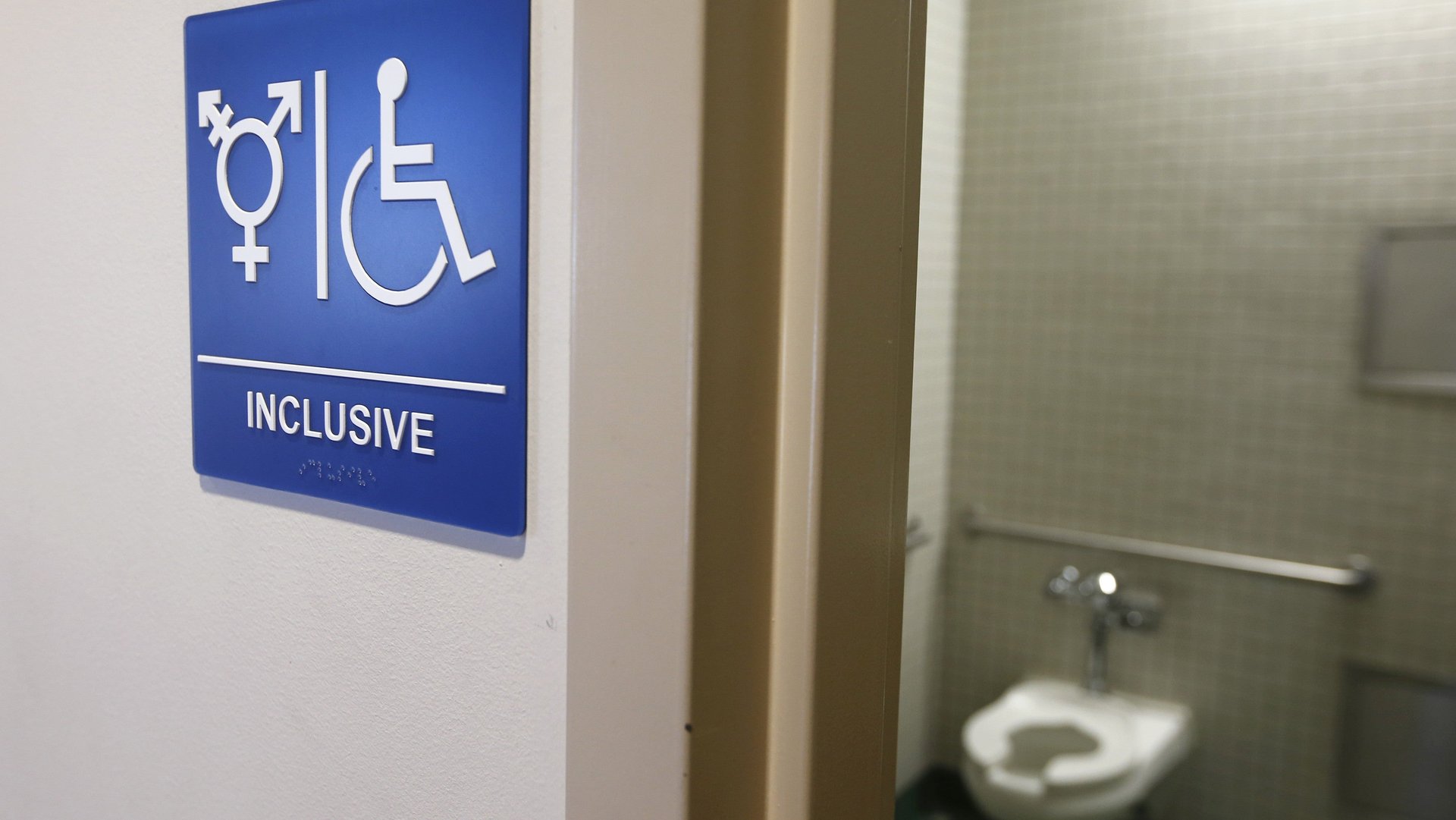How the simple act of peeing became political in the United States
This week, North Carolina governor Pat McCrory signed a bill into law to force the state’s nearly 40,000 transgender people to use restrooms according to the gender on their birth certificates, sparking a widespread outcry.


This week, North Carolina governor Pat McCrory signed a bill into law to force the state’s nearly 40,000 transgender people to use restrooms according to the gender on their birth certificates, sparking a widespread outcry.
“I’m very concerned for all of the trans people, especially trans kids, in North Carolina who are now going to be worried about being arrested or punished for simply using the restroom that matches the gender they live as every day,” said Mara Keisling, head of the National Center for Transgender Equality. “Essentially, this bill would make it illegal to be trans.”
The basic physiological need to use a bathroom is now a political battleground in many US states.
Earlier in March, the governor of South Dakota vetoed a bill that would designate which bathrooms transgender students could use in public schools, after being lobbied by transgender activists. New York mayor Bill de Blasio issued an executive order that ensures that people can use the city’s public restrooms according to their self-identified gender.
And many other states, egged on by the Republican leadership, are considering “bathroom bills” similar to the one that just passed in North Carolina.
In North Carolina, proponents of the law whipped up fears that predatory men would disguise themselves as women to sexually assault women. But advocates point out that there are no known instances of a transgender person attacking a non-transgender person in a bathroom.
In fact, it’s precisely the opposite. According to a 2013 survey by the Williams Institute, nearly 70% of transgender individuals surveyed in the Washington DC area had experienced a negative experience in the restroom. Eighteen percent said they were barred from entering a restroom, and 9% said they had been physically assaulted. The majority said they experienced health consequences as a result of avoiding public restrooms.
“I have been there: In truck stop bathrooms so terrifying, I turned around and walked out rather than attempt to use the one rickety stall; in a hundred men’s rooms with door-less stalls, holding it and holding it and holding it rather than risk giving myself away. I still change in locker rooms facing the bank of lockers, hoping my difference doesn’t get noticed, or get me hurt, or get me killed,” writes Quartz’s Thomas McBee.
But it’s not just about the potential violence: it’s about the simple fact that people want to be able to use a restroom according to their self-identified gender, not one ascribed to them by a legal document or by lawmakers. Many social media users have been illustrating the paradoxical, uncomfortable and sometimes scary situation: